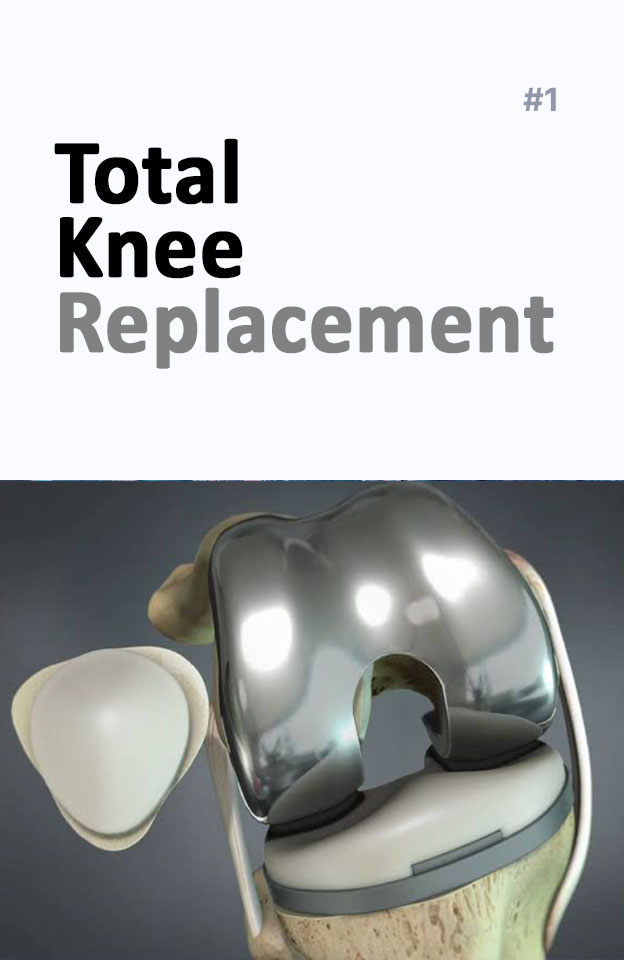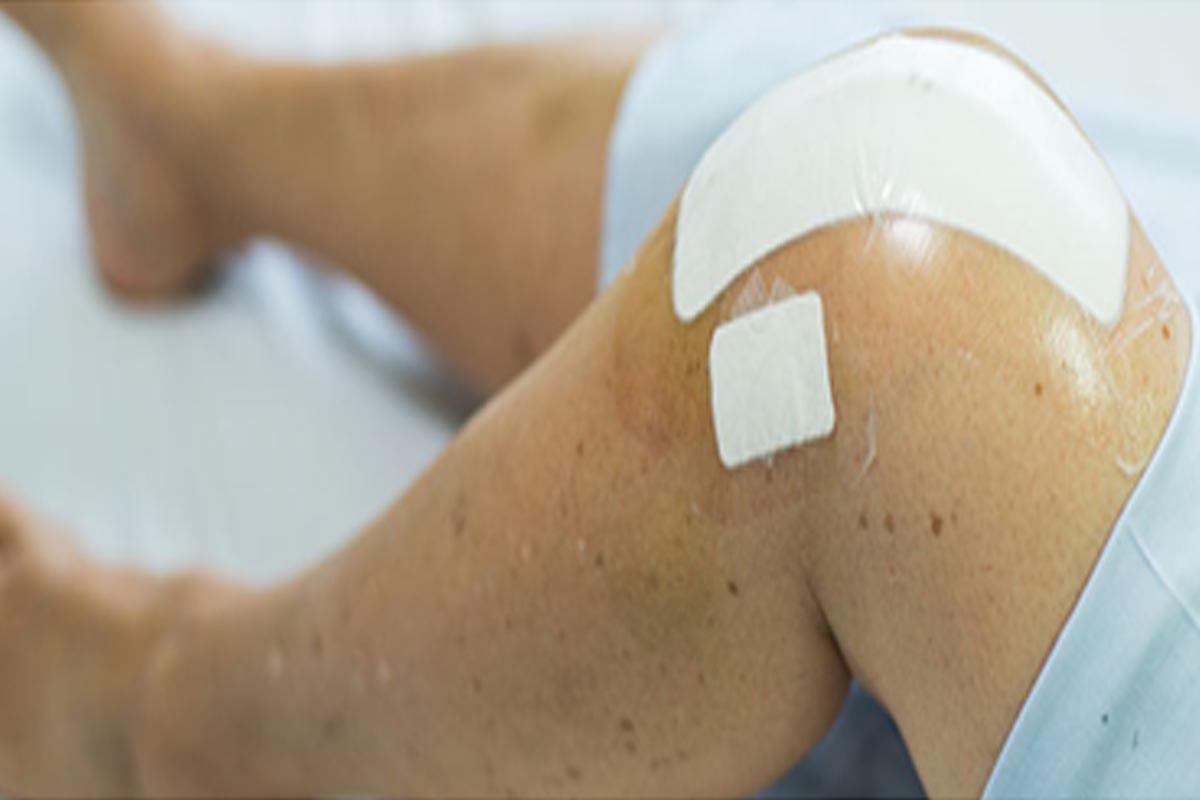Total Knee Replacement

Total Knee Replacement
Knee replacement is a surgery where your surgeon will remove the bone and diseased cartilage from where your femur (thigh bone) and Tibia (shin bone) meet at your knee joint.
Those surfaces are then replaced with a metal implant.A plastic material is placed in between the two metal parts. A similar piece of special plastic is normally used to replace the backside of the kneecap also.


This gives both bones of your knee joint smooth surfaces again so they can flex and bend more freely and painlessly.
Am I a candidate for total knee replacement?
You may be a candidate if you have been diagnosed with long standing arthritis which is not relieved now by conservative medication or physical therapy. Most often these Patients complain of severe pain to one or both knees.They also have problems walking, climbing stairs, and getting in and out of chairs. Some may even complain of knee pain at rest.
What can I expect during a total knee replacement?
TKR is and inpatient procedure,the patient is admitted a night before and is evaluated by the anaesthetist and a cardiologist for surgical fitness. after an anaesthetic fitness they are taken for surgery which usually last an hour per knee. During the surgery your surgeon would remove the bone and diseased cartilage from where your femur (thigh bone) and Tibia (shin bone) meet at your knee joint.Those surfaces are then replaced with a metal implant. A plastic material is placed in between the two metal parts. A similar piece of special plastic is normally used to replace the backside of the kneecap also.
After the procedure what can I expect?
You’ll be taken to a recovery room for one to two hours. You’ll then be moved to your hospital room, where you’ll likely stay for a couple of days. Medications prescribed by your doctor should help control pain.cDuring the hospital stay, you’ll be encouraged to move your foot and ankle, which increases blood flow to your leg muscles and helps prevent swelling and blood clots. You’ll likely receive blood thinners and wear support hose or compression boots to further protect against swelling and clotting.You’ll be asked to do frequent breathing exercises and gradually increase your activity level.The day after surgery, a physical therapist will make you stand and walk they willalso show you how to exercise your new knee. After you leave the hospital, you’ll continue physical therapy at home.
What are the different types of knee replacements?
Total knee replacement
Total knee replacement (TKR): Surgery involves the replacement of both sides of the knee joint. It is the most common procedure.

Partial knee replacement or unicondylarreplacement
Partial replacement replaces only one side of the knee joint. Less bone is removed, so the incision is smaller, but does not have the longevity as a total knee replacement.
PKR is suitable for people with damage to only one part of the knee. Post-operative rehabilitation is faster, there is less blood loss and a lower risk of infection and blood clots.
The hospital stay and recovery period are normally shorter as compared to a total knee replacement.

How long is the operation?
The operation is approximately 1- 2 hours.
What are the components made of?
A large variety is available themajority of TKR today consist of the following,
Cobalt-chrome alloy (CoCr) femoral component Cobalt-chrome alloy or titanium tibial tray.
Newer materials like oxinium or zirconium(OxZr)coated implants are showing exceptionally good results and longevity. The tibial bearing component and patellar component is usually made of a material called Ultra-high-molecular-weight polyethylene (UHMWPE).

How big will the scar be?
Your scar is generally about 6- 7 inches long

Dr ashish also uses derma bond which is a skin glue which doesn’t require skin sutures which can help in reducing the surgical scar

When can I shower?
Dr.Ashish Philip uses a special waterproof dressing on all incisions to ensure that the surgical site remains clean and dry preventing bacterial infection.

When will my stiches or sutures be removed?
Your sutures are removed 2 weeks from the day of surgery
I am experiencing a lot of swelling, is this normal?
Fluid can accumulate in the legs due to the effect of gravity. To combat this, you should elevate your legs at night by lying on your back and placing pillows under the legs so that they are above your heart. There are also TEDS stocking (the white stockings from the hospital) that you can put on during the day – have someone help you on with them in the morning, use them during the day, and then take them off at night. You can also use a crepe bandage.
Can I travel or fly?
If you are traveling by car, you should sit in the front passenger seat so it can be pulled back allowing for more space.Be sure to take frequent breaks so that you don’t feel too stiff when getting up. On an airplane, I it would be best to wear compression stockings (if within 1-month postop) and take a couple of walks during the flight. Having an aisle or a front row seat will help you get more space. On discharge you will also be given a fit to travel card which will give all details of the implants.
